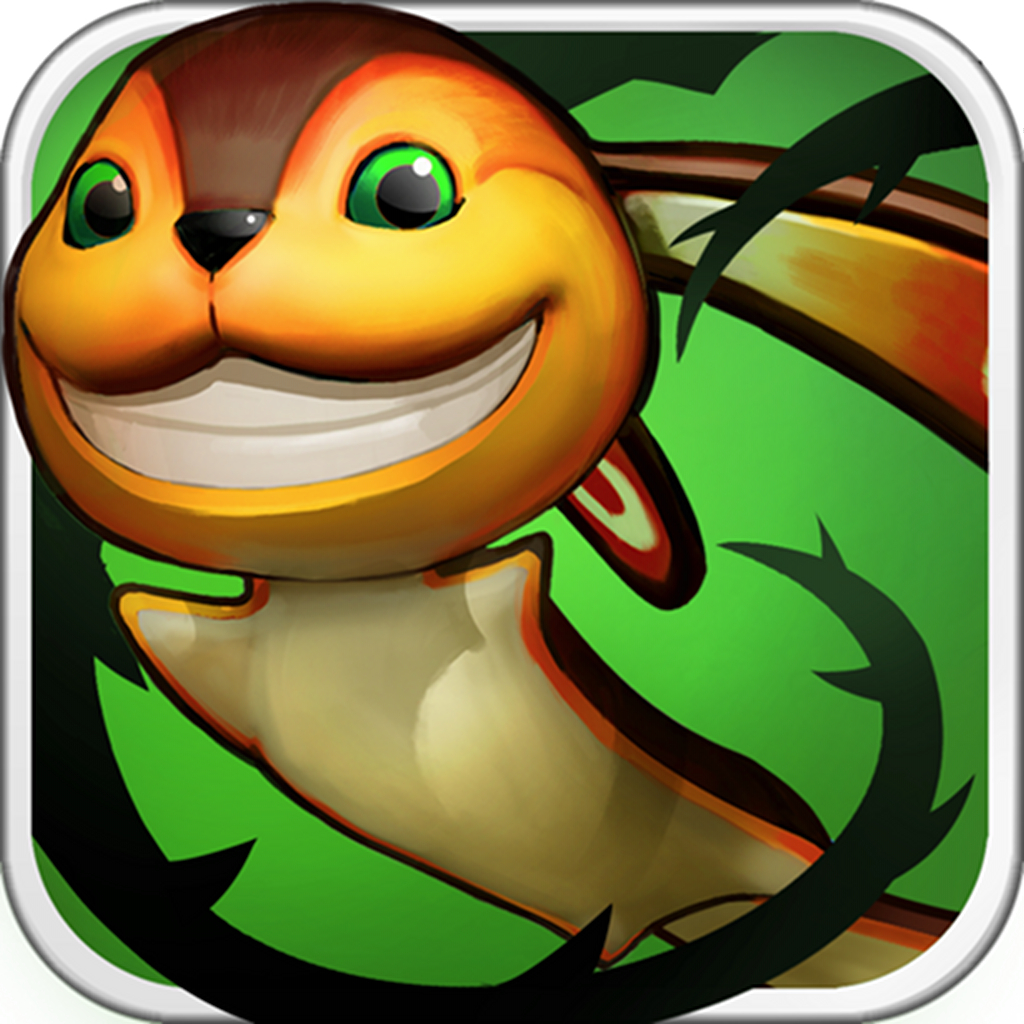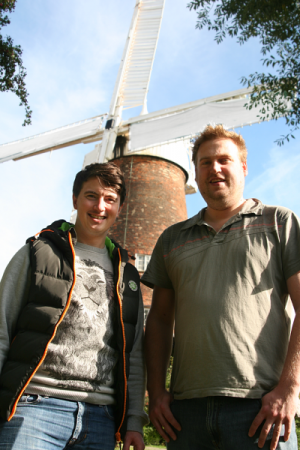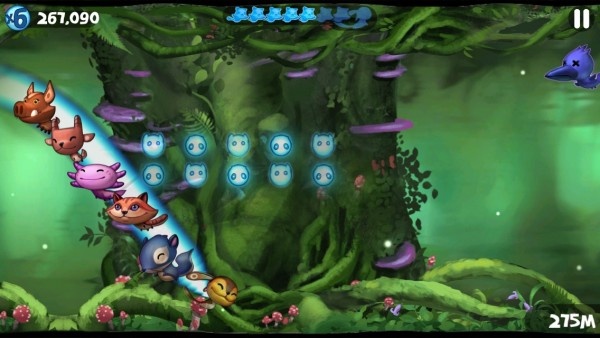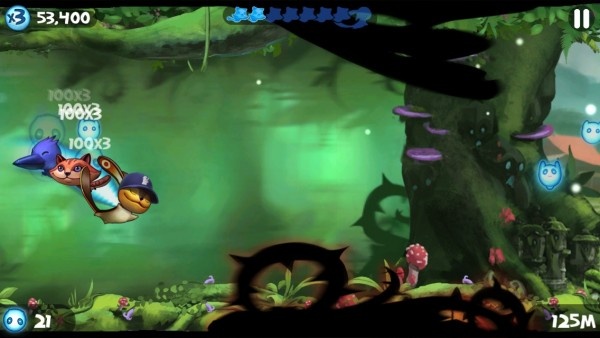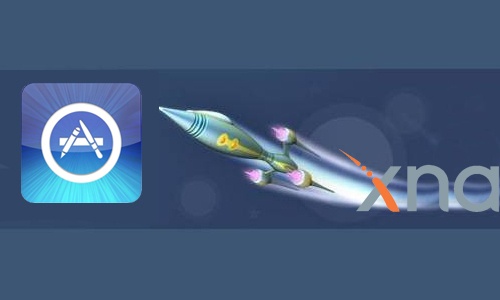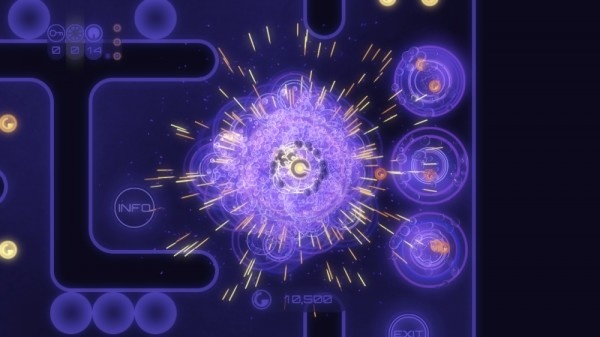With the firm's first release, PUK, hitting the App Store this week, we thought it was the perfect time to get to know more about the folks at up and coming UK based developers, Laser Dog Games. Here's what we've learned.

Who is Laser Dog Games?
Based in Manchester, UK, Laser Dog is a three man team made up of Simon Renshaw, Mike Milner and Rob Allison. Simon and Mike, previously, worked in creating user experiences and digital branding through web apps, which made games the "natural progression." Rob works on the code side of development, while Mike deals with the visual design as a conceptual artist. Simon deals with animation, production and game mechanics.
How did the Laser Dog name come about?
Simon explained to us, "We throw around ridiculous fictional brand concepts and ideas regularly, Laser Dog was one such example, originally the name of our '80's inspired electronica band'…[which] was never going to work as I can't play music for toffee. We were playing with ideas on a train back from a client meeting in London and I think it was me that remembered the name Laser Dog. We both debated whether we could seriously use it, laughed a bit, then agreed that it was perfect. Mike mocked up the brand the following day and Laser Dog became final."

What is Laser Dog Games most famous for?
Currently, only
PUK, a fast paced, minimalist action puzzler. It's a pretty entertaining Endless puzzler with 1000 unique levels testing players' ability to react quickly and think fast. It's certainly entertained me in recent days. We should have a full review shortly.
What's next on the horizon?
Still in the ideas phase, Simon told us that one possibility is a game focused "on the player having to destroy themselves" with the hope for a "deeper experience than PUK". There's also the possibility of expansion with the team's eyes closely on Ouya (a new type of games console) as well as working on mobile formats.
What else is there to know about Laser Dog Games?
Simon Renshaw was all too happy to answer a few burning questions I had about the developer and their latest title.
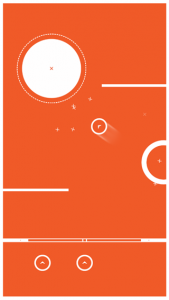
148apps: What was the inspiration behind
PUK?
Simon: We wanted our first game to mess with our players' feelings of anxiety and stress so we started developing a simple concept about a fish repeatedly jumping out of a bowl, running out of air and having to be popped back in. [It] was nice but very limited...before we knew it, we were adding Super Meat Boy Saws and it became an all devouring mess! Scrapping this, but keeping with the fish theme led us to an idea about waves washing up on the beach and leaving pockets of water and fish in their wake. The basic game mechanic: to put the fish back in the pools before the pools dried up and the wave washed in again effectively clearing the screen…this was quite a nice idea, but fundamentally it didn't require the theme.
We stripped the idea down to the bare minimum, designed a set of simple and pure game rules with a single clear objective: shoot PUKs at Portals before the time runs out, PUK was formed. We wanted the game to have enough 'simulation' freedom to feel like throwing a tennis ball around a court or bouncing balls around a snooker table so physics were essential. After some external play testing, the only thing players weren't seeing were that the Portals (once puddles) were shrinking. This was replaced with fixed size portals and a timer…It didn't really change the overall mechanic of the game, it just forced us to rethink the level design a little. I think (after a huge amount of play testing) if you can honestly say you still like your game after playing it for this long, you have to be proud of it, and we are!
148apps: As a relatively new iOS developer, is there any advice you wish someone had given you beforehand?
Simon: Yes, I wish someone had said 'get going, you bloody idiots! It's great fun but it's gonna take you a lot longer than you think!'. Test your game idea in your mind for as long as you can, move up to a note pad, squeeze this, bang out a prototype (PUK was originally created with Game Maker in 3 hours, albeit terribly and with just a mouse touchpad to test) then do something pretty with it to inspire you to make it great. Be prepared to bin big chunks of work if you haven't thought it through, no matter how good. Allow plenty of time for testing and get involved with local Indie Dev meet ups. They proved invaluable for us as you can get genuine feedback (learn to read faces, not words!), advice and wisdom from people who genuinely want to help.
148apps: What’s your favourite thing about iOS development?
Simon: One of the greatest things about iOS development is that it's opened up a massive outlet for indie devs like us to showcase their work. It's great when you open up the App Store and see so many indie companies competing with the 'big dogs' and, in most cases, maintaining more integrity with less in app purchases and generally more. As visual designers, we've always been inspired by Apple and their commitment to quality. Designing primarily for their devices and for iOS is a real privilege and it's exciting.
Where can I find out more about Laser Dog Games?
As is customary, there's a few different places to learn more (besides here, of course!). There's Laser Dog Games's site, Facebook page and Twitter account.
We'll have a full review of PUK soon.




